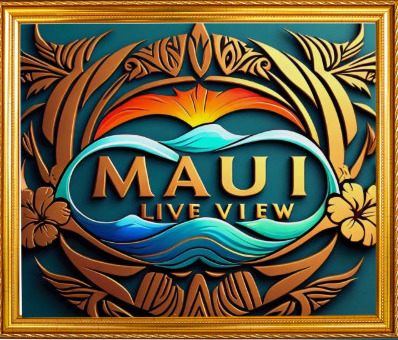Kamaole II Beach (Hale Pau Hana Hotel)
Charley Young Beach: A Hidden Gem in Kihei’s Crown of Coastal Treasures
Charley Young Beach at Kamaole I Beach Cam. Nestled along the sun-kissed shores of South Maui, Charley Young Beach stands as a testament to the island’s natural beauty and rich history. This picturesque stretch of sand, officially part of the larger Kamaole Beach Park I, has captivated visitors and locals alike for generations. From its geological origins to its modern-day status as a beloved recreational spot, Charley Young Beach tells a story of transformation, preservation, and community spirit.
The geological history of Charley Young Beach dates back millions of years, shaped by the forces of volcanism and erosion that created the Hawaiian archipelago. The beach sits on the western slopes of Haleakalā, a massive shield volcano that forms the bulk of Maui. Over time, lava flows from Haleakalā reached the coastline, cooling and fragmenting to create the foundation for what would become the golden sands of Charley Young Beach.
Long before European contact, Native Hawaiians inhabited the area now known as Kihei. The coastal region, including what is now Charley Young Beach, was an important site for fishing and gathering marine resources. Archaeological evidence suggests that early Hawaiians used the area for centuries, leaving behind artifacts such as fishing hooks, stone tools, and remnants of temporary shelters.
The name “Charley Young” itself is a relatively recent addition to the beach’s history. Charley Young was a local Kihei resident who owned property adjacent to the beach in the mid-20th century. Known for his generosity and love of the area, Young allowed public access to the shoreline through his property, effectively preserving this stretch of beach for community use. His legacy lives on in the beach’s unofficial name, although it remains part of the larger Kamaole Beach Park I.
The development of Kihei as a tourist destination began in earnest in the 1960s and 1970s. As hotels and condominiums sprouted along the coastline, concerns grew about maintaining public access to the beaches. The efforts of community members like Charley Young played a crucial role in ensuring that stretches of shoreline, including the beach that now bears his name, remained accessible to all.
In the 1980s, the County of Maui officially designated the area as part of Kamaole Beach Park I, encompassing Charley Young Beach and the adjacent shoreline. This designation provided formal protection and management for the beach, ensuring its preservation for future generations.
The 1990s and early 2000s saw increased efforts to balance tourism development with environmental conservation. Charley Young Beach became a focal point for local environmental groups working to protect native plant species, prevent erosion, and maintain the beach’s natural beauty. Community-led initiatives, such as beach cleanups and dune restoration projects, helped preserve the area’s ecological integrity.
Today, Charley Young Beach stands as a popular destination for both tourists and residents. Its clear waters and gentle waves make it an ideal spot for swimming, snorkeling, and paddleboarding. The beach is particularly renowned for its spectacular sunsets, drawing photographers and romantics alike to witness the sun dipping below the horizon, often with the islands of Lanai and Kahoolawe visible in the distance.
The beach’s popularity has led to some challenges, particularly in terms of parking and facilities. In response, local authorities have implemented measures to manage visitor impact, including the installation of showers, restrooms, and designated parking areas nearby. These improvements have helped maintain the balance between public enjoyment and environmental preservation.
Charley Young Beach has also played a role in local cultural revitalization efforts. Hawaiian cultural practitioners occasionally use the beach for traditional ceremonies, connecting present-day residents with the area’s rich heritage. Educational programs, often led by local non-profits, introduce visitors and residents to the beach’s ecosystem, teaching about native marine life and the importance of coastal conservation.
The beach has not been immune to the effects of climate change and sea level rise. In recent years, concerns about coastal erosion have prompted discussions about long-term preservation strategies. Local government agencies, in collaboration with environmental scientists and community groups, have begun exploring sustainable solutions to protect Charley Young Beach and other coastal areas from the impacts of rising seas and intensifying storms.
Despite these challenges, Charley Young Beach remains a beloved local treasure. Its history reflects the broader story of Maui’s South Shore – a narrative of natural beauty, cultural significance, and the ongoing effort to balance development with preservation. The beach serves as a reminder of the importance of community stewardship and the power of individuals like Charley Young to make a lasting impact on their environment.
As Maui continues to evolve as a world-class tourist destination, Charley Young Beach stands as a symbol of what makes the island special. It embodies the spirit of aloha, welcoming visitors while maintaining a deep connection to the land and its history. The beach’s story is far from over; each passing year adds new chapters to its rich narrative.
Looking to the future, Charley Young Beach faces both opportunities and challenges. Efforts to protect its natural beauty and enhance its accessibility continue, guided by a community that recognizes its value. As climate change reshapes coastlines worldwide, the preservation of places like Charley Young Beach becomes ever more critical – not just as recreational spaces, but as living links to Hawaii’s geological, ecological, and cultural heritage.
In the grand tapestry of Maui’s coastal wonders, Charley Young Beach may be a small thread, but it is woven with the vibrant colors of natural beauty, community spirit, and enduring aloha. It stands as a testament to the power of preservation and the enduring allure of Hawaii’s shores, inviting all who visit to become part of its ongoing story.
For more information, visit the official Maui website.
